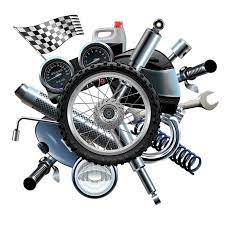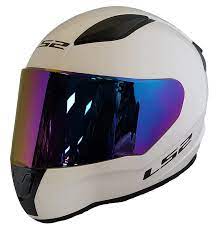Unlocking Performance and Reliability: Exploring the World of Motorcycle Spares

Exploring the World of Motorcycle Spares
When it comes to motorcycles, enthusiasts understand that proper maintenance and occasional repairs are essential for keeping their beloved machines running smoothly. Whether you’re a seasoned rider or a passionate beginner, having access to high-quality motorcycle spares is crucial for ensuring the longevity and performance of your bike.
The Importance of Genuine Motorcycle Spares
Motorcycles are complex machines with numerous components working together to provide a thrilling riding experience. Over time, wear and tear can take a toll on these components, requiring replacement or repair. When faced with this situation, it’s important to opt for genuine motorcycle spares.
Genuine spares are specifically designed and manufactured by the original equipment manufacturer (OEM) of your motorcycle. They are built to the highest standards and undergo rigorous testing to ensure compatibility, reliability, and optimal performance. By choosing genuine spares, you can have peace of mind knowing that you’re using parts that meet the exact specifications of your bike.
Choosing the Right Motorcycle Spares
With a wide range of motorcycle spares available in the market, it’s important to choose wisely. Here are a few factors to consider when selecting spares for your bike:
- Quality: Always prioritize quality over price. Investing in high-quality spares will save you from frequent repairs and replacements in the long run.
- Compatibility: Ensure that the spare parts you choose are compatible with your specific make and model of motorcycle. Refer to your bike’s manual or consult with an expert if needed.
- Sourcing: Purchase spares from reputable dealers or authorized distributors who specialize in motorcycle parts. This ensures authenticity and reliable customer support.
- Warranty: Check if the spares come with a warranty. A warranty provides added protection and peace of mind in case of any manufacturing defects.
The Benefits of Regular Maintenance
Regular maintenance is key to keeping your motorcycle in top shape. By following the manufacturer’s recommended service intervals and using genuine spares, you can enjoy several benefits:
- Improved Performance: Regular maintenance, including timely replacement of worn-out parts, ensures that your bike performs optimally, delivering the power and responsiveness you expect.
- Enhanced Safety: Well-maintained motorcycles are safer to ride. Faulty or worn-out components can lead to accidents or breakdowns, so it’s crucial to address any issues promptly.
- Prolonged Lifespan: Taking care of your bike through regular maintenance helps extend its lifespan. By replacing worn-out parts with genuine spares, you can keep your motorcycle running smoothly for years to come.
- Preserved Resale Value: If you ever decide to sell your motorcycle, a well-maintained bike with genuine spares will have a higher resale value compared to one that has been neglected or fitted with subpar parts.
In conclusion, motorcycle spares play a vital role in maintaining the performance and longevity of your beloved machine. Opting for genuine spares and adhering to regular maintenance schedules will ensure that you enjoy a safe and exhilarating riding experience every time you hit the road. So, invest wisely in quality spares, keep up with routine maintenance, and embark on countless memorable rides with confidence!
“Ensuring a Match: Determining Compatibility of Motorcycle Spares with Your Bike”
3. “Essential Replacements: The Most Commonly Changed Motorcycle Spare Parts
- 1. Where can I buy genuine motorcycle spares?
- 2. How do I determine the compatibility of motorcycle spares with my bike?
- 3. What are the most commonly replaced motorcycle spares?
- 4. Are aftermarket spares as reliable as genuine ones?
- 5. How often should I replace certain motorcycle spares?
- 6. Do motorcycle spares come with a warranty?
- 7. Can I install motorcycle spares myself or should I seek professional help?
- 8. Are there any specific maintenance tips for preserving the lifespan of motorcycle spares?
1. Where can I buy genuine motorcycle spares?
If you’re wondering where you can buy genuine motorcycle spares, there are several reliable options available to you. One of the best places to start your search is by visiting authorized dealerships or service centers affiliated with your motorcycle’s brand. These establishments typically stock a wide range of genuine spares that are specifically designed for your make and model. Additionally, reputable online retailers specializing in motorcycle parts can provide a convenient and accessible way to purchase genuine spares from the comfort of your own home. It’s important to ensure that you choose trusted sources that offer authentic products to guarantee the quality and compatibility of the spares you purchase.
2. How do I determine the compatibility of motorcycle spares with my bike?
Determining the compatibility of motorcycle spares with your bike is crucial to ensure proper functioning and optimal performance. To determine compatibility, it is recommended to refer to your bike’s manual or consult with an expert. The manual typically provides a detailed list of compatible spare parts specific to your make and model of motorcycle. Additionally, experienced professionals at authorized dealers or specialist shops can offer valuable guidance and advice based on their expertise. By seeking the right information and expert assistance, you can confidently choose motorcycle spares that are compatible with your bike, ensuring a seamless fit and reliable performance.
3. What are the most commonly replaced motorcycle spares?
When it comes to motorcycle maintenance, there are certain components that tend to require more frequent replacement than others. Some of the most commonly replaced motorcycle spares include tires, brake pads, chains and sprockets, oil filters, and spark plugs. These parts undergo regular wear and tear due to their constant use and exposure to various road conditions. It’s important for riders to regularly inspect these components and replace them as needed to ensure optimal performance and safety on the road. By staying proactive in replacing these commonly worn-out spares, riders can enjoy a smoother ride and extend the lifespan of their motorcycles.
4. Are aftermarket spares as reliable as genuine ones?
One frequently asked question regarding motorcycle spares is whether aftermarket spares are as reliable as genuine ones. While aftermarket spares can offer a more affordable alternative, their reliability can vary depending on the brand and quality. It’s important to note that genuine spares are specifically designed and manufactured by the original equipment manufacturer (OEM), ensuring compatibility and optimal performance. On the other hand, aftermarket spares are produced by third-party manufacturers, which may result in varying levels of quality and compatibility. It is advisable to research reputable aftermarket brands and consult with experts or experienced riders to make an informed decision based on your specific needs and budget.
5. How often should I replace certain motorcycle spares?
The frequency of replacing certain motorcycle spares depends on various factors such as the specific part, the make and model of your bike, and your riding habits. Generally, it is recommended to follow the manufacturer’s guidelines outlined in your bike’s manual. These guidelines typically provide recommended service intervals for different components, including when to replace items like tires, brake pads, chains, and filters. Additionally, factors like mileage, riding conditions, and maintenance practices can also influence the lifespan of motorcycle spares. Regular inspections and consultations with a trusted mechanic can help determine when it’s time to replace certain parts to ensure optimal performance and safety on the road.
6. Do motorcycle spares come with a warranty?
Yes, many motorcycle spares come with a warranty. It is always recommended to check with the manufacturer or the authorized dealer to confirm the warranty coverage for specific parts. Having a warranty provides added assurance and protection in case of any manufacturing defects or premature failures. It gives peace of mind knowing that if there are any issues with the spare parts, you can rely on the warranty to address them. Remember to keep any necessary documentation and proof of purchase in case you need to make a warranty claim in the future.
7. Can I install motorcycle spares myself or should I seek professional help?
When it comes to installing motorcycle spares, the answer depends on your level of expertise and comfort with mechanical work. While some riders may have the skills and knowledge to handle installations themselves, others may prefer to seek professional help. If you have experience with motorcycle maintenance and possess the necessary tools, installing spares yourself can be a rewarding and cost-effective option. However, if you are unsure or lack confidence in your abilities, it is always advisable to consult a professional mechanic who specializes in motorcycles. They have the expertise to ensure proper installation, minimizing the risk of errors or potential damage. Ultimately, prioritizing safety and accuracy is key when deciding whether to install motorcycle spares yourself or seek professional assistance.
8. Are there any specific maintenance tips for preserving the lifespan of motorcycle spares?
Preserving the lifespan of motorcycle spares is crucial for ensuring the longevity and performance of your bike. Here are a few specific maintenance tips to help you achieve this goal. Firstly, regularly inspect your motorcycle spares for any signs of wear and tear, such as cracks or corrosion. Promptly replace any damaged parts with genuine spares to prevent further damage. Secondly, follow the manufacturer’s recommended maintenance schedule and perform routine checks on important components like brakes, chains, and filters. Regular cleaning and lubrication also help in preventing premature wear. Lastly, store your spare parts in a cool, dry place away from direct sunlight or extreme temperatures to avoid deterioration. By following these maintenance tips, you can extend the lifespan of your motorcycle spares and keep your bike running smoothly for years to come.

